 What is music? Where does it come from? Is it an inevitable result of brain anatomy and the fundamentals of mathematics? Does it come from culture and mind? Does it come from the nature of consciousness? Has it evolved through time as a form of communication?
What is music? Where does it come from? Is it an inevitable result of brain anatomy and the fundamentals of mathematics? Does it come from culture and mind? Does it come from the nature of consciousness? Has it evolved through time as a form of communication?
Three basic elements of language and music, pitch (intervals and melody), timbre (the quality of the sound), and rhythm have an infinite range of possibilities and are related to experiences in nature. Specific meaning is added by lyrics.
We all know what music is, but science can’t easily define it or its multiple different effects, music being so complex and ubiquitous, spanning anatomy, neuroscience, psychology, education, physics, mathematics, social science, anthropology, spirituality, animal behavior and evolution. It appears almost as an alternative form of consciousness.
Music is produced by the structures of the nervous system, and, conversely, music can greatly alter the brain’s structures with practice, performance and composition. It is one of the most complex multisensory forces in neuroplasticity.
 As a unique force in human life, music stimulates soldiers to march into war, drives groups of people to ecstasy in dance, enables reverie and spiritual experience, and evokes the wide range of human emotions.
As a unique force in human life, music stimulates soldiers to march into war, drives groups of people to ecstasy in dance, enables reverie and spiritual experience, and evokes the wide range of human emotions.
This post is an introduction to a series exploring music, mind, brain and nature. Music presents many difficult questions. One is the way the brain handles the enormous complexity of music, and, also, the dramatic plasticity that occurs in the brain as a result of music. Did the brain evolve specifically to handle music? Are there structures in the brain specific to the meaning of music? Is music a language?
Music is Unique in Using Almost All of the Brain
 Playing, listening, and creating music involves most cognitive skills and uses most of the brain. As well, changes in the brain occur from all aspects of music, musical training in childhood and adulthood, and performing and listening in different traditions around the world. There is evidence that training in music stimulates unique brain capacities.
Playing, listening, and creating music involves most cognitive skills and uses most of the brain. As well, changes in the brain occur from all aspects of music, musical training in childhood and adulthood, and performing and listening in different traditions around the world. There is evidence that training in music stimulates unique brain capacities.
The following is a partial list of parts of the brain that are utilized in the experience of music.
Pre Frontal Cortex
This brain center executes planning for performance, composing, evaluation of accuracy and satisfaction, self initiated improvisation, and professional musicians’ self-analysis.
Motor System – Motor Cortex and Motor Tracts
While listening to music the body moves, taps and dances, while the performer displays advanced sensorimotor coordination. Listening can stimulate all these sensorimotor centers as well.
Sensory System – Receptors, Tracts and Cortex
Most senses are involved in music including visual cues while performing, observing performances or reading music. The auditory cortical system and tracts are crucial starting with the perception of sounds and including the analysis of all aspect of tones, intervals, melodies, timbre and rhythm. Hearing any sound triggers these cortical regions. Touch and proprioception are involved in performance with instruments.
Cerebellum
The centers of coordination of movement and motor memory for foot tapping, performance, and dancing are very important in timing and tracking the beat. It is also crucial for all motor memory, including feelings and experiences associated with specific movements.
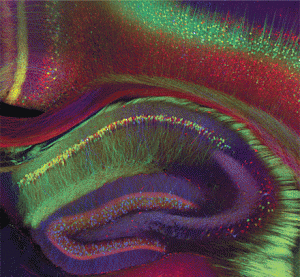 Hippocampus and Cortex
Hippocampus and Cortex
This is the key center for all memory, including memory of performance details, and associative memory for context while listening. With each melody, timbre and rhythm there are specific associations based on previous experience. The hippocampus has wide ranging connections with all parts of the cortex. Like other memories, each time the memory is brought up, by listening to or playing a piece of music, the old associations are associated with the new re experiencing of the music. Even thinking about the tune, or the feelings associated with the tune, alter the past memory and tags new associations to it.
Amygdala and Limbic system
All areas of emotion are triggered by music, including responses to different chords, melodies and timbres.The amygdala and the limbic emotional brain centers are triggered when we listen to favorites and is associated with getting “chills” for some musical moments.
Nucleus Accumbens
The centers of reward for music are the same as for eating, food and addiction. Rewards related to music include people’s reactions to a performance, the experience of a live concert, and playing and listening to the special piece of music.
Multi-sensory Integration
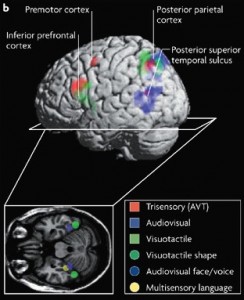 Music takes advantage of the tremendous networking that occurs between all regions of the brain. Just recently, it was thought that each different sense connects with another sense at specialized regions – such as audiovisual and visuotactile cortex. A cortical center was also known for multi-sensory language. It was thought that only higher associative areas had advanced networking with other higher centers.
Music takes advantage of the tremendous networking that occurs between all regions of the brain. Just recently, it was thought that each different sense connects with another sense at specialized regions – such as audiovisual and visuotactile cortex. A cortical center was also known for multi-sensory language. It was thought that only higher associative areas had advanced networking with other higher centers.
Recently, it has been discovered that all regions of the brain are highly connected to many others senses as well as more advanced associative regions. One example is in the auditory cortex, where each region that breaks down complex sounds into different characteristics is also interacting with other senses, memory, and interpretation.
Limitations of Neuroscience in Studying Music
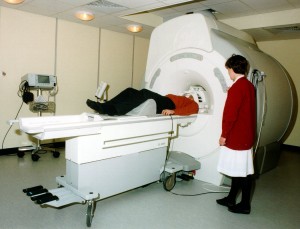 A previous post noted in detail the problems and limitations of imaging devices. Incorrectly, people generally believe, and scientists often imply, that imaging can show which parts of a brain represent the exact mechanism of mental processes. One of the problems listed in the post is that time scales of measurements in MRI are not realistic for brain events. Other problems relate to the fact that MRI picks up blood flow not neuronal activity. Another problem is that a lit up area doesn’t mean that the activity is significant; an important example was discovered with psychedelics where centers appear shut down when there is actually increased activity (see post).
A previous post noted in detail the problems and limitations of imaging devices. Incorrectly, people generally believe, and scientists often imply, that imaging can show which parts of a brain represent the exact mechanism of mental processes. One of the problems listed in the post is that time scales of measurements in MRI are not realistic for brain events. Other problems relate to the fact that MRI picks up blood flow not neuronal activity. Another problem is that a lit up area doesn’t mean that the activity is significant; an important example was discovered with psychedelics where centers appear shut down when there is actually increased activity (see post).
Another problem is that some information is not relayed by neurons, but rather by electromagnetic oscillations. In fact, recently, it was shown that memories involve a large number of different regions of the brain working together, and most interestingly, that memories of time and space use specific different frequencies for communication by oscillations, or brain waves.
Therefore, with such a complex network of events it is currently impossible to know exactly all of the regions involved.
Another important limitation is that most current scientific measurement of music uses MRIs, which is a very unnatural way to listen to music, and does not study the real social context of music in life, in parties, in churches, and other social settings. The dry academic study of distinguishing two tones, for example, is boring and unrelated to the natural ways we listen to music and real effect it has. Music effects can no more be studied in the laboratory, than can mental capacities in animals. (see post on limitations of animal study).
Unique Plasticity of Music
 Because of the extreme complexity of the brain networks involved with music and the dramatic effects of music on the brain, music causes unique brain plasticity. A future post will show the tremendous value for the brain of learning music. Also, there is a possibility that musical plasticity is actually metaplasticity, meaning that the plastic changes of music learning may help other aspects of the brain as well.
Because of the extreme complexity of the brain networks involved with music and the dramatic effects of music on the brain, music causes unique brain plasticity. A future post will show the tremendous value for the brain of learning music. Also, there is a possibility that musical plasticity is actually metaplasticity, meaning that the plastic changes of music learning may help other aspects of the brain as well.
Music and Emotions
Music has the capacity to evoke almost all human emotions. Is this related to a unique correlation of music and the emotional brain, or is it culturally determined?
Laboratory study of music’s relation to emotion is currently severely limited because the social context in which we hear or produce music is very important in determining brain effects.
Outline of Music in Nature
The following are points to be discussed in the upcoming series of posts about music, the mind, the brain and nature.
 1. What is Music?
1. What is Music?
Is music the inevitable result of anatomy and mathematics?
Is music a form of language? Polyrhythmic African drumming is more based on structure than emotion.
Is music, expressed in culture, part of extended mind existing in an individual brain and body but also throughout society.
Is it uniquely human or do animals also have music? Has it developed through evolution?
 2. Music and the Brain
2. Music and the Brain
Unique anatomy of music in the brain networks, including multisensory properties.
Is expert music based on training or genetics? Or both?
Is dissonance based on the anatomy and physics of the ear?
What are the effects of music training on the brain. Music appears to have unique neuroplasticity effects in the brain.
Music neuroplasticity has been surprisingly helpful in the treatment of disease.
What are brain differences of trained and untrained musicians?
Metaplasticity – is music a universal brain training?
There are many limitations of current scientific data including imaging. Is musical information transmitted in the brain as oscillations or neuronal connections.
What could explain the sudden onset of advanced musical ability after brain injury in accidental savants? (see post)
If music is very developed is there risk of other underdeveloped areas in the brain, such as in savants?
Repetitive rhythmic melody is hypnotic.
In the same way that an animal’s real mental capacities cannot be studied in a laboratory, music resists laboratory study, research needing realistic life situations to see the actual effects.
 3. Improvisation
3. Improvisation
Improvisation with music uses the unique multisensory plasticity.
Improvisation employs unique mental states.
What are the connections between improvisation, creativity and meditation?
4. Music and Emotion
For many, music exists to express emotion.
Is there universal emotional appeal based on brain anatomy?
Are emotional effects of music culturally based?
Is music a powerful language or something more?
 4. Music and Spirituality
4. Music and Spirituality
As well as melody, timbre and rhythm, the meaning of the words in chants have effects.
Music is able to stimulate ecstasy.
Chanting mantras are used to reach meditative states.
Are there unique spiritual effects of music?
Music can be used for good or evil.
Are there primal tones that uniquely vibrate neurological spinal centers?
 5. Music and Evolution
5. Music and Evolution
For music to evolve by natural selection it must increase survival.
Did music evolve as language might have by multi-sensory signaling between creatures.
Or, is it a sideline of evolution that expanded culturally in humans?
Researchers have assumed there is no music in animals because of the lack of study in the wild, as had been done with study of animal intelligence.
Research now shows some animals make music in song and dance.
Those with pets know that animals can understand music.
See videos of listening cows, listening whale and the dog playing piano on website in Animal Section.
How did music evolve?
Is musical talent inherited or trained? Absolute pitch?
What Is Music
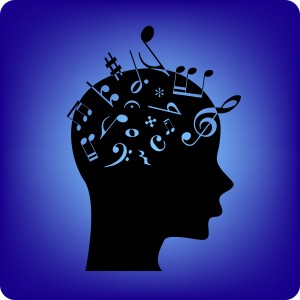 Like other aspects of consciousness music can be used for good or evil. It is a form of communication and a stimulus for action. Music is a force, harnessing powers of nature, brain structure, culture and mind. Music can move people to march into violent war, to chant into a state of reverie and spiritual experience, to stimulate emotions of fear, sadness, and laughter, and enable people to dance till ecstasy.
Like other aspects of consciousness music can be used for good or evil. It is a form of communication and a stimulus for action. Music is a force, harnessing powers of nature, brain structure, culture and mind. Music can move people to march into violent war, to chant into a state of reverie and spiritual experience, to stimulate emotions of fear, sadness, and laughter, and enable people to dance till ecstasy.
To begin to answer the question, the next post will discuss how the brain processes music and how the brain is processed by music producing dramatic plasticity. Other posts will discuss the unique effects of improvisation and its relation to meditation and other extraordinary mental states (see extraordinary mental state posts 1 – outline, 2 – super talents, 3 -body consciousness and out of body experiences, 4 – psychedelics, 5 – spiritual experiences). Further posts will discuss whether there are inherent unique relationships between music and emotion, and the large question of music in evolution.
 1. What is Music?
1. What is Music?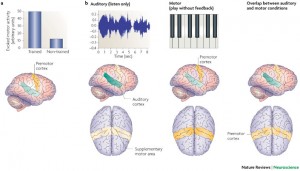 2. Music and the Brain
2. Music and the Brain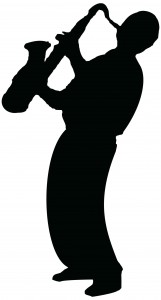 3. Improvisation
3. Improvisation 4. Music and Spirituality
4. Music and Spirituality  5. Music and Evolution
5. Music and Evolution